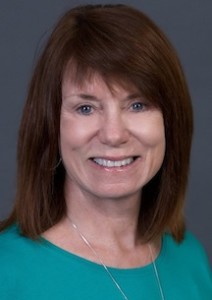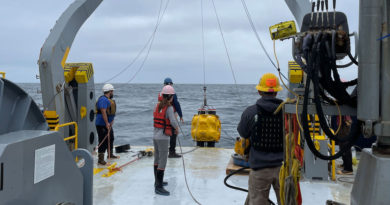Daily Business Report-Oct. 19, 2015
San Diego Trolley at Downtown station.
Someone Finally Quantified
San Diego’s Smart-Growth Failure
By Andrew Keatts | Voice of San Diego
Half a dozen news reports blared a similar headline: A new study showed San Diego’s trolley stops, or its trolley system in general, were the worst in the state.
That is not what the study actually found.
The study was far more damning.
The study’s most critical conclusions weren’t directed at the Metropolitan Transit System or its stations. They keyed on decades of development decisions by the city of San Diego and other cities along the trolley lines.
It quantified a phenomenon that’s long been apparent anecdotally: Local leaders support smart growth — urban development that’s crucial for transit ridership — in theory, but not in practice.
They are not planning for or facilitating enough construction of walkable, affordable housing near transit access points.
The Center for Law, Energy & the Environment at UC Berkeley’s School of Law and nonprofit research group Next 10 concluded the San Diego metropolitan area has done worse than all other metro areas in the state at combating climate change and economic inequality through its development decisions.
“All I can do is comment on the outcomes,” said Ethan Elkind, one of the study’s authors. “The outcomes place San Diego at the bottom. In terms of walkability and encouraging a sustainable growth network, San Diego has a lot of work to do.”
Concentrating development – both jobs and housing – around stations determines how successful a transit system can be and how much public subsidy it needs. It combats climate change, with transit usage nationwide cutting emissions equivalent to the electricity usage of 4.9 million homes a year. It allows low-income residents the economic freedom of forgoing car ownership.
This is the basic goal that’s motivated every major planning document in urban San Diego for many years.
Yet despite the wholesale embrace of “transit-oriented development” by long-term planning documents throughout the region, the city almost never follows through on it in practice.
The report measured the transit friendliness of half-mile areas surrounding 489 light-rail stations in Los Angeles, Sacramento, the Bay Area and San Diego. It created a grading rubric for each one based on things like how many homes and jobs were in the area and what policies local governments had enacted to promote transit-focused development.
San Diego’s transit neighborhoods came in dead last. It had the lowest-ranked station, in El Cajon’s Gillespie Field. Its best-performing station neighborhood — the 12th and Imperial Transit Center downtown — would have been the 21st best neighborhood in the Bay Area, 35th best in Los Angeles, 14th best in Sacramento and third best in San Jose.
_________________________________________________________

FAA to Require Registration
Of All Privately Owned Drones
Times of San Diego
The Obama administration, faced with a surge in unauthorized drone flights, will announce a new initiative today aimed at registering the owners of drones.
The registration will reportedly even affect owners of hobby drones, which have become increasingly popular as prices have dropped under $100 for small units.
The announcement is expected to be made by Transportation Secretary Anthony Foxx and Michael Huerta, administrator of the Federal Aviation Administration, at a news conference attended by members of the drone industry.
Two sources who were informed of the plan said the administration will announce the formation of an independent advisory committee with the goal of creating the structure of a federal drone registry by December.
The expected initiative represents the administration’s effort to address the rising number of unauthorized drone sightings near airports and crowded public venues. The FAA has reported more than 650 unauthorized drone sightings so far this year, as of Aug. 9, compared with 238 for all of 2014. If sightings continue at that rate, the number would near 1,100 by the year end.
In the San Diego area, 19 drone encounters with aircraft were reported, most occurring near the San Diego, Carlsbad and Ramona airports as commercial, military and private aircraft were taking off or landing.
The growth in sightings, and forecasts for more than a million U.S. drone sales next year, have raised concerns about UAS colliding with commercial aircraft during landing or take-off, or being used as a weapon in a deliberate attack.
Officials say efforts to track down the owners of rogue drones have been frustrated in part by a 2012 congressional decision to bar the FAA from regulating recreational drones.
FAA Deputy Administrator Michael Whitaker told a House panel last week that the agency was considering setting up a registry with manufacturers to keep track of drone owners, commercial and recreational.
Like other federal agencies including the U.S. Department of Homeland Security and the Pentagon, FAA is also testing new technology that could be used to detect and track rogue drone flights that could pose a safety or security risk.
Republicans and industry officials have blamed the FAA for the surge in rogue drone flights, saying the U.S. aviation regulatory agency failed to produce final regulations for commercial drone flights in time to meet a Sept. 30, 2015, congressional deadline.
Final drone regulations are now expected early in 2016.
Reuters contributed to this article.

HUD Secretary in San Diego
To Advocate for Homeless Veterans
U.S. Housing and Urban Development Secretary Julián Castro is in San Diego today on a mission to advocate for homeless veterans.
This morning Castro was to tour the Hotel Churcill in Downtown San Diego, which is undergoing renovations to reopen as housing for veterans and at-risk youth.
Later, Castro will deliver keynote remarks at the Mortgage Bankers Association annual convention and expo and the 72nd annual convention of the National Congress of American Indians, where he will announce progess toward expanding HUD assistance for homeless veterans on tribal lands.

Scripps Institution of Oceanography Selects
Executive to Lead Finance and Operations
Steve Gallagher, a financial management and facilities operations executive with experience at several scientific organizations, has been selected to serve as assistant vice chancellor for finance and operations at Scripps Institution of Oceanography.
Gallagher’s career for the past 28 years has included a number of roles in management and program leadership at scientific organizations, including positions as regional administrator, deputy chief financial officer, deputy chief administrative officer, director of budget and planning, and project manager. Gallagher served as director of budget for the National Oceanic and Atmospheric Administration (NOAA) in Washington, D.C., with duties that included planning and executing NOAA’s budget of more than $6 billion in annual expenditures, 17,000 employees, and 400 facilities.
Most recently, Gallagher served as the executive director and site manager for NOAA’s Daniel K. Inouye Regional Center in Honolulu, Hawaii. The IRC consolidated 16 NOAA offices into a 310,000-square-foot facility with space for more than 700 NOAA employees and contractors. His duties included governance, operations, financial management, and planning.
Gallagher replaces Doug Bennett, who served as assistant vice chancellor at Scripps Oceanography from December 2006 to August 2015.

San Diego Ranked 2nd Best
Running City in the Nation
San Diego has been ranked the second-best running city in the country — behind Orlanda, Fla., by the Vitals Index. That’s running — as in pounding the pavement.
Orlando, San Diego and Las Vegas were the top three ranked cities on the list. Orlando not only has an impressive number of sports medicine specialists who practice there, but it also hosts the Walt Disney Marathon which drew 65,523 runners last year — the largest race in the nation, according to the index.
The index is based on quality ratings and access to sports medicine physicians and orthopedic surgeons. It also considers the number of full and half marathons hosted by a city, the number of participants for the largest race and the number of runs per person.
San Diego hosts much smaller races, but holds 11 full or half marathons per year, plus several other shorter-distance events. According to a Vitals Index chart, San Diego had 41.4 runs per person, with the largest race attracting 13,391 runners.
Some cities known for their mega-marathons have fewer sports specialists per capita than more intimate racing venues, according to the index. For instance, while New York City hosts one of the largest marathons in the nation, there’s only one sports specialist for every 18,580 residents. In comparison, Birmingham (No. 8 on the list) has one sports specialist for every 2,021 residents.

Philanthropist T. Denny Sanford’s Vision is
Basis of New Book on Nonprofit Fundraising
The Sanford Institute of Philanthropy at National University announces the launch of a new textbook aimed at helping nonprofit organizations maximize their fundraising potential through the application of proven business and sales principles.
The book — “Cause Selling The Sanford Way” — is based on the vision of philanthropist T. Denny Sanford and serves as the foundation of a series of educational programs developed by the university, which is the second-largest private nonprofit university in California.
Sanford is widely considered one of the most generous donors in the country, and his experience interacting with hundreds of fundraisers has given him valuable insight into successful donor relations. The book was written by Dr. David J. Lill, an educator, professional salesperson and author of the textbook “Selling: The Profession.” His daughter Jennifer, is co-author.
“Through his own personal experiences as a generous and strategic donor, Mr. Sanford brings a remarkable perspective toward donor relationships and nonprofit leadership,” said Michael R. Cunningham, chancellor of the National University System and President of National University.
“I founded the Sanford Institute of Philanthropy to focus not on teaching nonprofit management, leadership and administration, for which several good programs already exist, but to help train people who ask philanthropists for money to do a better job of it and therefore enable nonprofit organizations to operate more effectively and sustainably,” said Sanford.
NASSCO Starts Construction
of the Fifth ‘ECO’ Tanker
General Dynamics NASSCO signaled the start of construction of a fifth “ECO” tanker to be built for American Petroleum Tankers at a steel cutting ceremony Friday at NASSCO’s San Diego shipyard. Betsy Larson, wife of NASSCO’s director of commercial programs, Parker Larson, served as the ceremony’s honoree.
The first ECO tanker in the series — the Lone Star State — was christened on Saturday.
As part of a five-tanker contract between NASSCO and American Petroleum Tankers, each of the 50,000-ton product carriers to be constructed by NASSCO shipbuilders will be LNG-conversion ready and will carry 330,000 barrels of cargo. With a specialized ECO design, the tankers are more energy efficient and incorporate environmental protection features, including a Ballast Water Treatment System.
“Today’s start of construction signals the fifth tanker currently under construction at NASSCO for our customer, American Petroleum Tankers. As a result of advanced design and technology, once delivered, these tankers will be among the most energy-efficient, fuel-saving tankers in the world — benefitting both our customer and the end consumer,” said Kevin Graney, vice president and general manager for NASSCO. “These tankers help fuel America’s economy – and NASSCO is proud to be a part of that mission.”
The tankers were designed by DSEC, a subsidiary of Daewoo Shipbuilding & Marine Engineering of Busan, South Korea. DSEC’s ECO design achieves improved fuel efficiency through several features, including a G-series MAN ME slow-speed main engine and an optimized hull form. The tankers will have conversion-capable, dual-fuel-capable auxiliary engines and the ability to accommodate the future installation of an LNG fuel-gas system and tanks.
The construction and operation of the new vessels are aligned with the Jones Act, requiring ships carrying cargo between U.S. ports to be built, crewed and owned by the U.S.
NASSCO Delivers First
Natural-Gas Powered Container Ship
City News Service
The world’s first container ship to be powered by liquefied natural gas was delivered Friday by General Dynamics NASSCO of San Diego to New Jersey-based TOTE Maritime.
The 764-foot-long Isla Bella was handed over to its operator nearly two months ahead of schedule, according to NASSCO.
The companies said the vessel and its sister ship, the Perla Del Caribe, will dramatically reduce carbon emissions and improve fuel efficiency compared to conventionally powered boats. The Perla Del Caribe has been launched, but not yet delivered.
NASSCO officials said they worked together with TOTE, the American Bureau of Shipping and U.S. Coast Guard throughout the process, from design approval to construction and commissioning the ship.
The Isla Bella and its sister ship will operate between Jacksonville, Florida, and San Juan, Puerto Rico, for TOTE, which stands for Totem Ocean Trailer Express.
6th Littotal Combat Ship
Headed to San Diego
Times of San Diego
The future USS Milwaukee — sixth in the growing fleet of littoral combat ships — has been accepted by the Navy and will be based in San Diego.
The ship was built in a Wisconsin shipyard on Lake Michigan, and its commissioning will be held Nov. 21 in its namesake city before sailing through the Great Lakes and heading to San Diego.
Milwaukee is third of the monohull, Freedom variant, to join the fleet. The other ships are based on a trimaran hull.
“With each LCS delivered, we have succeeded in driving down costs by incorporating lessons learned to provide the Navy with a highly capable and flexible ship,” said LCS program manager Capt. Tom Anderson. “We are honored to place the Milwaukee in the able hands of her crew as they set sail for the ship’s commissioning.”
Following commissioning, Milwaukee will be homeported in San Diego with sister ships USS Freedom (LCS 1), USS Independence (LCS 2), USS Fort Worth (LCS 3), USS Coronado (LCS 4) and the future USS Jackson (LCS 6).
The littoral combat ships are modular vessels that can be configured for three different missions: surface warfare, mine countermeasures and anti-submarine warfare. The Navy is building 50 in two variants.
Library to Feature Film on Music
Journey of Young Man with Autism
Drama House Productions LLC based in La Jolla and Bklyn2LA Productions announce that the documentary, “Bass Clef Bliss: Terrence’s Path,” will return to San Diego for a one-night showing tonight at the San Diego Central Library in the Neil Morgan Auditorium at 330 Park Blvd.
The public is invited at no charge.
The film begins at 6:30 p.m. and a question and answer session with the cast and the director will be held directly following the film. The panel discussion will focus on the challenges and joys a family faces when raising a child who has autism.
This special showing is a “sneak peek preview” of the 51-minute film, with the official opening of the film targeted for April 2016 to coincide with Autism Awareness Month.
Filmed almost entirely in San Diego, “Bass Clef Bliss: Terrence’s Path” is a documentary about Terrence Patridge, an extraordinary young man with autism and his mother, Therese Davis, whose courage and determination helped him to gain independence and flourish in a burgeoning music career.
Personnel Announcements
Kathi McCalligan Joins Baker Electric Solar

Kathi McCalligan has been appointed director of marketing for Baker Electric Solar. McCalligan is responsible for the strategy and execution of all digital and traditional marketing programs, social media, public relations, community relations and events.
McCalligan has domestic and international experience creating and executing integrated marketing programs. Before joining the firm, she held the position of director, integrated marketing and events at San Francisco-based Blu Homes. Her career experience also includes serving as marketing director for Sunset Publishing, one of Time Inc.’s iconic brands, and a marketing management position for Hewlett-Packard’s networking business.
McCalligan received her bachelor’s degree from Antioch College.



